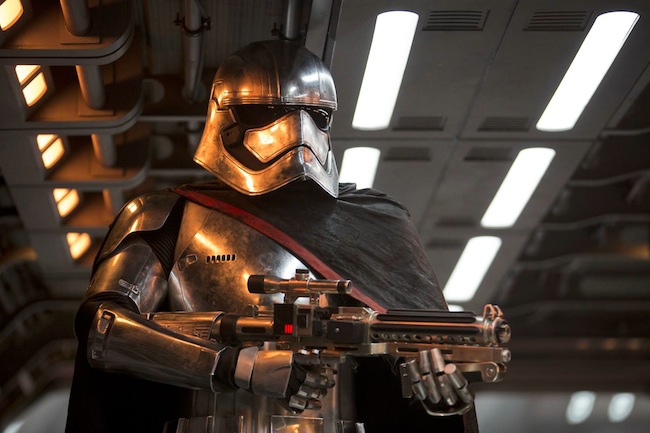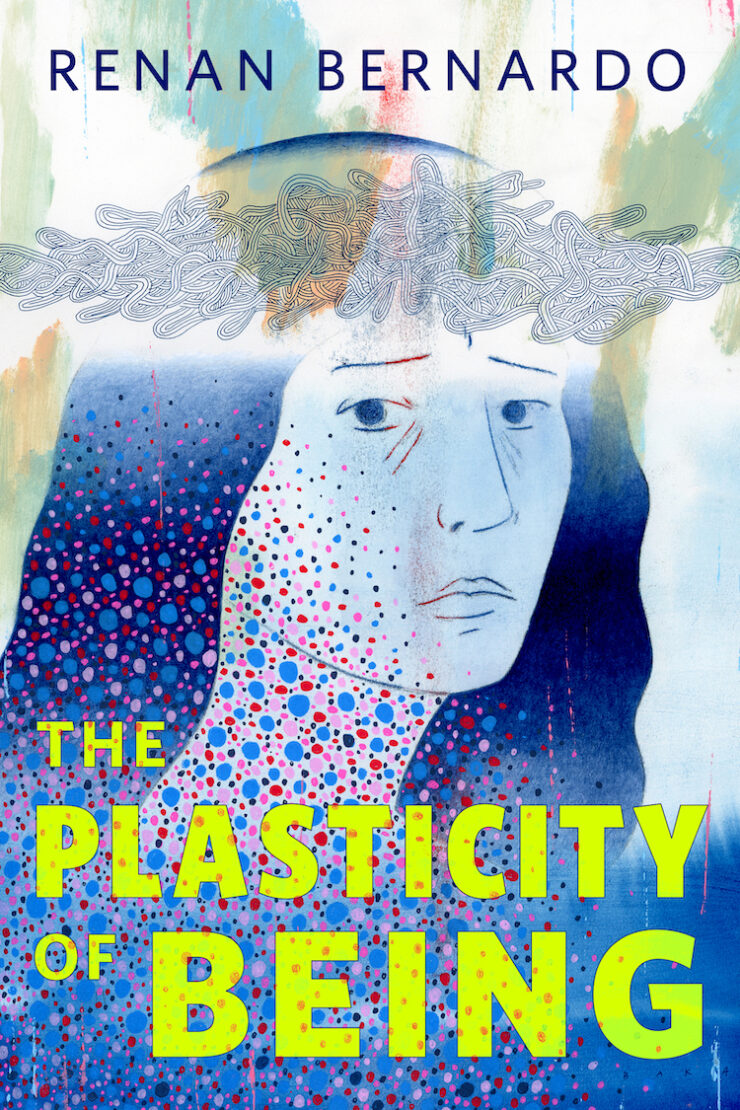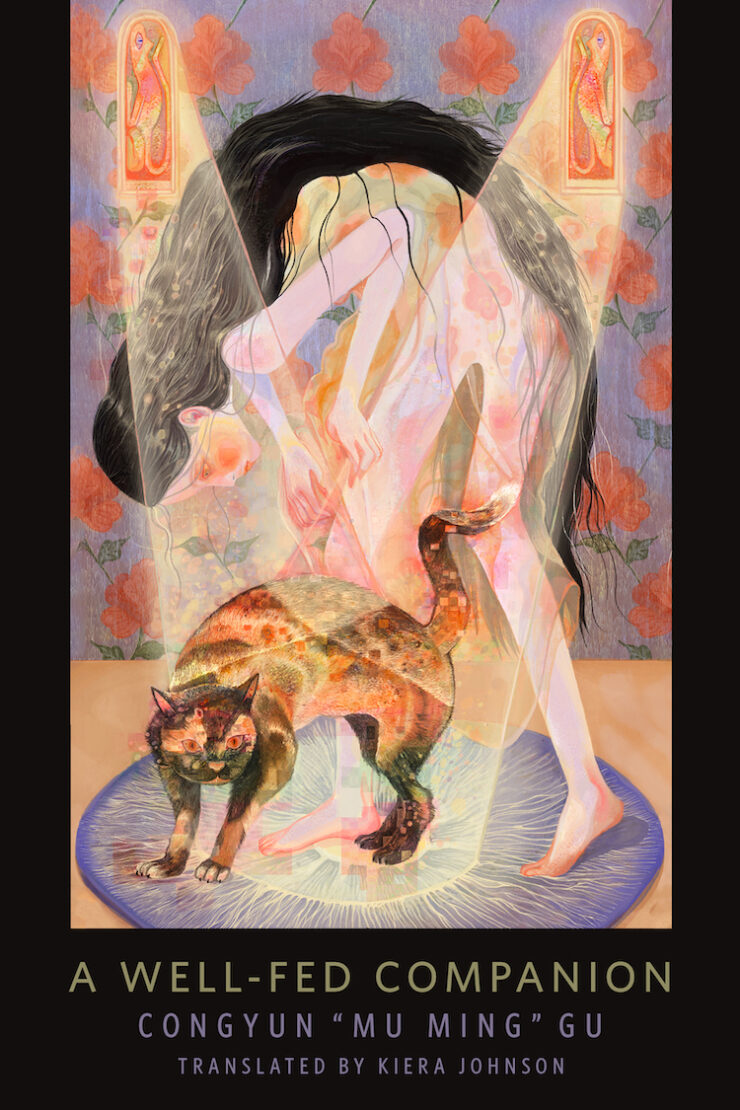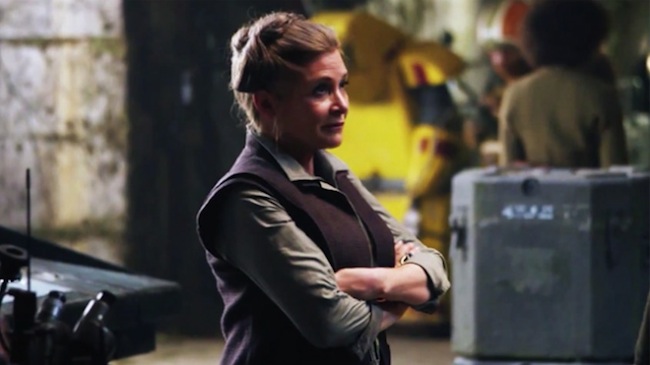The spoilers are strong with this one.
So. Star Wars: The Force Awakens. It’s pretty Star-Wars-y, isn’t it? Nice change from the prequels: it’s got that lived-in space opera feel about it again, the feeling that there’s a life beyond what we’re shown on the screen. And Rey! Rey with that lightsaber, man, that’s a moment.
But for all my tiny feminist glee about Star Wars finally showing me a Force-sensitive hero who is also a woman on the big screen (a competent woman! who isn’t made into a sexual object! who isn’t the only visible woman in the whole course of the film!) it brought home to me, yet again, just how low Hollywood’s bar really is when it comes to giant franchises and women’s roles. We really are so used to making do with scraps that we end up delighted to get tossed even half a bone.
Because much as I enjoyed Star Wars: The Force Awakens—much as I was thrilled to see background characters who were women, women in the crowd scenes and in the cockpits of the X-Wings, women making up part of the world of people who do things—I have some serious problems with the portrayal of every narratively significant female character who isn’t Rey in The Force Awakens. (Quite aside from how hard it is to find Rey or General Organa in the merchandise for said film, which is a problem for another day.)
Look at the proportions on display:
On the First Order side, we have Kylo Ren, General Hux, Captain Phasma, and (barely present) Supreme Leader Snoke.
From the previous generation, we have Han Solo, Chewbacca, Leia Organa, and (barely present, save as Jedi MacGuffin) Luke Skywalker.
From the bright young things, we have Finn, Poe Dameron, and Rey.
Over in a corner on their own, we have the droids: C-3PO reads as masculine thanks to the voice, R2-D2 and BB-8 are arguable cases, but they tend to receive male pronouns.
And separate from the rest, we have people like Maz Kanata, Han Solo’s angry creditors, and the scavenger-market boss bloke, among others. They don’t fit into any other category.
At best TFA’s proportion of female characters on-screen and doing narratively interesting/important things hovers between one quarter and one third. At worst—well, when you examine what the women get to do in the narrative, things don’t improve. (Do we even dare mention the absence of visible women who aren’t white from major speaking roles? Lupita Nyong’o acts from behind layers of CGI as child-sized big-eyed yellow-alien Maz. I mean. Even if Nyong’o chose a CGI role deliberately, c’mon.)
Let us compare the narrative presence of Leia to that of Han Solo, and of Captain Phasma to General Hux. (I’m going to leave Kylo Ren aside for now, except to direct you to read this piece via Foz Meadows.)
General Leia Organa is mentioned in the title crawl. She is a rhetorical presence in the film’s inciting events, but not an actual one: a prime mover, but an invisible one. This invisibility is important, for when we meet her later in person, it is for a brief handful of scenes; scenes in which very little emphasis is given to her role as general, but rather a lot to positioning her relative to the men in the narrative. She is Luke’s sister, Kylo Ren’s mother, and Han’s maybe-not-exactly-ex: her scant handful of scenes (one? two?) of any emotional significance are with Han, and filled with platitudes about their son. (Carrie Fisher’s charisma and presence is wasted on those platitudes.) She barely interacts with the bright young things of the new generation. What on-screen characterisation do we have for General Organa, really? How much of how we read her character relies on what we know of her from the original trilogy?
Contrast Han Solo. He’s not mentioned in the title crawl, but once he appears (mid-desperate-escape-from-Jakku) his presence takes up space. He is characterised as a wise-cracking screw-up from his actions. In his banter with Rey and Finn and his creditors, we get a sense of someone with a history and a smart mouth, someone with complex feelings about—and some avoidance issues regarding—responsibility who’s eventually willing to do the right thing. Han has a narrative arc around returning to face his responsibilities, awkwardly half-finding a surrogate child in Rey, and confronting his Dark Side son with the power of loving self-sacrifice.
General Leia Organa? Doesn’t have an arc at all.

The disparity is not quite so pronounced when we consider Captain Phasma (Gwendoline Christie) and General Hux (Domhnall Gleeson). Both Phasma and Hux exist in Kylo Ren’s orbit, and are relatively minor presences in the narrative; and thanks to the magnificent character design and Christie’s imposing stature, Phasma makes a far greater visual impression—while exuding a understated menace that almost matches the original Moff Tarkin*—than does Hux. But when we examine their roles, and their activities during the film’s climactic sequence, the matter does not fall out favourably. Hux is a general, and appears to be Kylo Ren’s peer, while Phasma is a captain and subordinate to them both. And during the climactic sequence of events, Hux (a) is the central speaker at a gathering of First Order troops that consciously evokes the Nazi pageantry of the Nuremberg rallies, and (b) is active and giving orders in what looks to be Starkiller Base’s CIC. Phasma, on the other hand, is captured by Han, Chewie, and Finn, and ends up giving them the information they need to take down Starkiller Base’s shields—an act, for a committed stormtrooper officer, that can only be seen as one of gross cowardice and treachery.
*No one in The Force Awakens can match Peter Cushing’s politely merciless sheer efficiency as Moff Tarkin. Alas.
We never see Phasma’s face behind her helmet, either. She is a faceless woman, never humanised as Ren is, or as Hux is by the sheer virtue of his expressions. Her humanity is as invisible as her features.
Now Rey has a heroic arc. But apart from her conversations with Maz, the women in The Force Awakens exist for the most part in isolation from each other. Unlike the men.
I keep seeing a series of… gaps, here, where it comes to developing the female characters on screen (bar Rey) as completely as the men. Where it comes to giving them equal time and equal significance and equal weight.
This is not to say that The Force Awakens is a bad film. This is not to say, even, that it’s not better than a large number of recent ensemble-cast speculative fiction films where it comes to the presence and portrayal of women. But Hollywood has a problem with really low bars. The Force Awakens is thrillingly better about women than a shittonne of stuff—including its immediate predecessors.
But that’s still only half a bone.
I want the whole damn bone, people. I want to stop having to be happy about not being excluded entirely: I want that inclusion to be so normal it’s no longer remarkable. I want to see heroic women of multiple generations talk to each other, for heaven’s sake.
I want to raise the bloody bar. Raise it high.
Liz Bourke is a cranky person who reads books and other things. She has recently completed a doctoral dissertation in Classics at Trinity College, Dublin. Find her at her blog. Or her Twitter.










